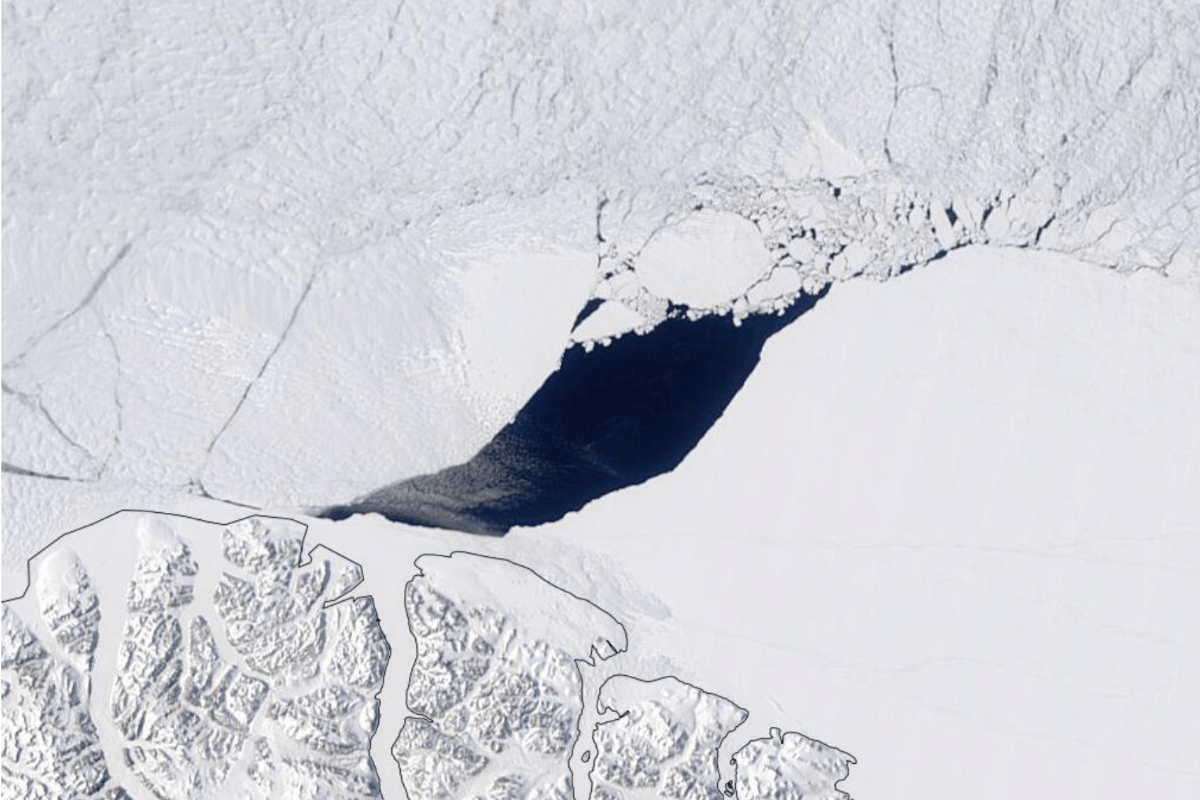
The gaping hole formed in an area referred to as the Last Ice Area, suggesting that this “Last Ice Area” may not be as resilient as previously thought.
In an area north of Canada we find the thickest and oldest sea ice in the world. Scientists thought that the ice there – even in the face of climate change – would last for a while. But that assumption is increasingly being called into question. Especially now that researchers in this area have spotted an immense hole.
Last Ice Area
Scientists refer to the area in northern Canada as ‘The Last Ice Area’. This is because there is very thick sea ice here that has survived even the hottest summers so far. In addition, climate models predicted that if you fast-forward to 2100, the ice here will survive the longest during the summer.
The Last Ice Field extends over hundreds of thousands of square kilometers from the Western Canadian Arctic Islands to the northern coast of Greenland. In this part of the Arctic, the sea ice is more than five years old and can be more than four meters thick. And that’s quite a bit; most ice in the Arctic is only one to four years old. A number of Arctic animals – such as seals and polar bears – depend on the sea ice for hunting and rearing their young. The ‘last ice’ is therefore a refuge for these animals; it’s the last place they can retreat to in the warming world.
But now this ice also appears to be cracking. Researchers have noticed a gaping hole of no less than 3000 square kilometers in the ice – comparable to the size of the province of Groningen. This polinia – an area of persistent open water where one would actually expect sea ice – is the first ever discovered in this area.
polinia
The formation of the polinia is very unusual, partly because of its location. For example, we find the hole off the coast of the Canadian Ellesmere Island, where the ice is up to five meters thick. “No one had seen a polinia in this area before,” says study leader of the study Ken Moore. “The ice here doesn’t move as easily and, moreover, it doesn’t melt as quickly. That’s because the sea ice here is very thick. Plus, there’s quite a bit of it.”

The 3000 square kilometer large hole. Image: NASA EOSDIS Worldview
It is therefore very remarkable that a hole has been spotted here for the first time. According to the researchers, this also shows that The Last Ice Area is not as resilient as previously thought. “The formation of a polynia in the area is really interesting,” said researcher David Babb, who was not involved in the study. “It’s like a crack in the shell of this solid ice sheet. So that this is happening really highlights that the Arctic is changing.”
extreme wind
The researchers suspect that the 3000-square-kilometer hole was created by extreme winds in a high-pressure area. The strong gusts of wind pushed the ice to the side, “which in itself is normal,” Babb said. “However, it is very unusual for sea ice as thick as in the Last Ice Area to be blown away just like that, especially in places far from the coast, where the wind is usually weaker.”

In this gif you can see how the polinia grows over time. Image: NASA EOSDIS Worldview
Polinias are not necessarily bad for local ecosystems. At least in the short term. “Sea ice areas are like a desert,” Moore said. “But in an area with open water, all kinds of activities suddenly take place. Seabirds search for food, just like polar bears and seals. They are incredibly productive regions.” Unfortunately, this does not outweigh the long-term and irreversible damage of the loss of sea ice. “If the ice melts, walruses and seabirds won’t be able to get there either,” Moore said. “We lose the advantage because of this. And eventually it will get so hot that species will not survive.”
It will probably not stay with this one polinia spotted in The Last Ice Area. As the polar ice gets thinner and thinner every year, polynia is likely to develop more often. “When ice thins, it’s easier to move,” Moore says. “In addition, in that case it is easier to form polynias that require less extreme force. There are therefore indications that polinias will show up more often or grow larger than in the past. And higher temperatures also mean that lost ice is unlikely to be replaced by new ice.”
Source material:
“Scientist discover large rift in the Arctic’s last bastion of thick sea ice” – AGU
Image at the top of this article: NASA EOSDIS Worldview